- News
- Reviews
- Bikes
- Components
- Bar tape & grips
- Bottom brackets
- Brake & gear cables
- Brake & STI levers
- Brake pads & spares
- Brakes
- Cassettes & freewheels
- Chains
- Chainsets & chainrings
- Derailleurs - front
- Derailleurs - rear
- Forks
- Gear levers & shifters
- Groupsets
- Handlebars & extensions
- Headsets
- Hubs
- Inner tubes
- Pedals
- Quick releases & skewers
- Saddles
- Seatposts
- Stems
- Wheels
- Tyres
- Tubeless valves
- Accessories
- Accessories - misc
- Computer mounts
- Bags
- Bar ends
- Bike bags & cases
- Bottle cages
- Bottles
- Cameras
- Car racks
- Child seats
- Computers
- Glasses
- GPS units
- Helmets
- Lights - front
- Lights - rear
- Lights - sets
- Locks
- Mirrors
- Mudguards
- Racks
- Pumps & CO2 inflators
- Puncture kits
- Reflectives
- Smart watches
- Stands and racks
- Trailers
- Clothing
- Health, fitness and nutrition
- Tools and workshop
- Miscellaneous
- Buyers Guides
- Features
- Forum
- Recommends
- Podcast
feature
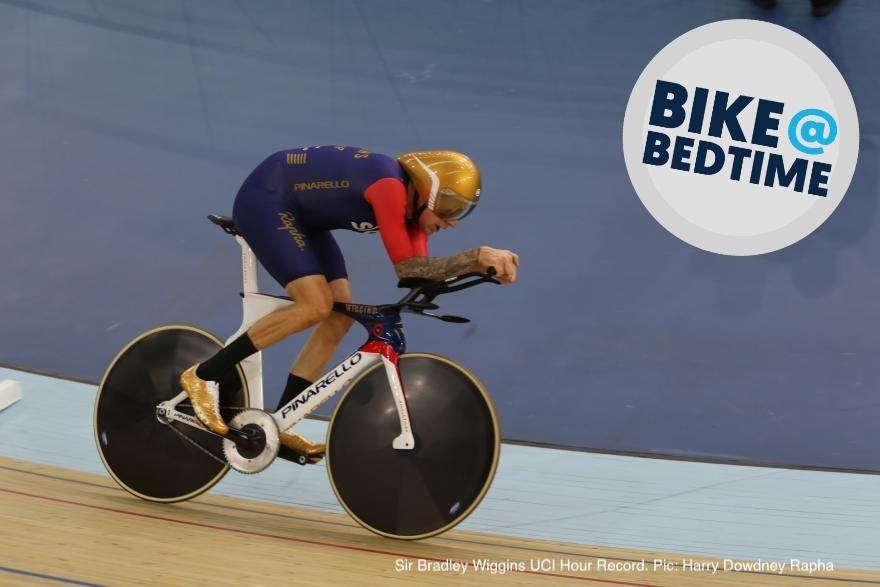 sir-bradley-wiggins-uci-hour-record-03-picture-credit-harry-dowdney-rapha
sir-bradley-wiggins-uci-hour-record-03-picture-credit-harry-dowdney-raphaCheck out Bradley Wiggins’ UCI Hour Record Pinarello Bolide HR
Filippo Ganna of Ineos Grenadier is set to take on the UCI Hour Record this weekend on a new Pinarello Bolide F HR, so it’s an apt time to check out the Bolide HR that Bradley Wiggins rode to break the record at Lee Valley VeloPark, London, back in 2015.
> Pinarello unveils “the first high-performance 3D-printed bike” for Ganna’s UCI Hour Record attempt
Wiggins achieved his hour record on a Bolide HR (HR for ‘Hour Record’) that was co-engineered by Pinarello and Jaguar. Pinarello said that the Bolide HR was designed using CFD (computational fluid dynamics), as you’d expect, every component having been analysed to inform modifications. The finished bike was said to have an overall aerodynamic performance increase of 7.5% compared with the the Bolide that Wiggins rode to win the World Championship Time Trial in 2014, largely due to a new one-piece titanium handlebar, narrow fork and chainstay design.
Not surprisingly, Pinarello said that the main considerations in the design process for Wiggins’ bike were aerodynamics – the most important consideration because of the high speed involved – and stiffness, to transfer the rider’s energy to the rear wheel.
As is usually the case with aerodynamics, the work was done using CFD(computational fluid dynamics) simulations, with the then-current road (as opposed to the track) version of the Bolide time trial as the start point.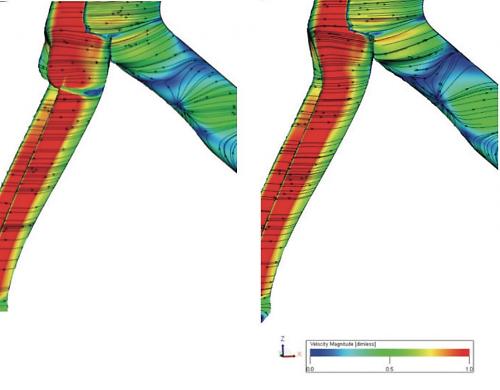
The road Bolide that was being used at the time (above left) had a fork with a nose that was shaped to house the front rim brake, but you don’t have brakes on a track bike so the designers had scope to alter that area. They said that smoothing the fork surfaces (above right) led to a significant decrease in drag.
The designers could have widened the fork stance to increase the space for airflow and reduce drag in that way, but they decided to take a different approach, minimising the gap between the wheel and the fork legs to reduce the amount of air passing through.
The front dropout was modified to reduce the detachment of the airflow, lessen turbulence behind the dropout and decrease drag.
> Check out Ineos Grenadiers' Tour de France Pinarello Dogma F
Further modifications were made to other parts of the frame and the components, including the rear wheel and the handlebar.
“A further analysis was performed to check the aero performance considering the track characteristics (most velodromes today are 250m long and the maximum banking is about 42°),” said Pinarello.
“The rider will spend almost half of the time on the curves, so the airflow will have also a lateral component, which is calculable. Again, using CFD, this condition was analysed and… the effect on the performance of the bike [measured].”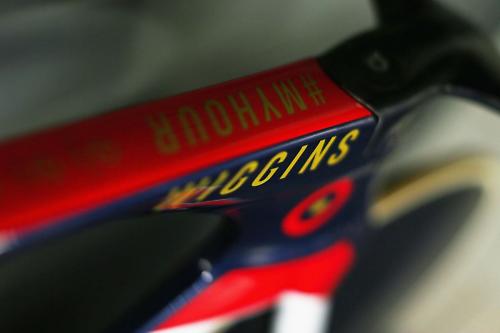
When it comes to frame rigidity, Pinarello said, “Increased stiffness… allows better power transfer to the rear wheel, without wasting energy by flexing the frame and therefore pulling the wheels out of alignment in every pedal stroke.”
See, there's a reason we go on about frame stiffness in most of our bike reviews!
“Composite materials allow the production of very stiff frames with a low weight; at the same time, a proper design and production technique could further increase the performance. Traditional frames, for cost and time reasons, are usually produced in two or more parts, then bonded together, because this method allows quicker and cheaper production. At the same time, the bonding areas require more material (to allow the overlapping of the parts), which means more weight and creates zone of possible stress concentration.
“To solve all these problems the frame is made as a one piece composite with no bonded parts after curing; this resulted in a light and stiff frame.”
The designers paid particular attention to the design of the handlebar because it always has a major influence on the aero performance of a complete bike thanks to its position at the front.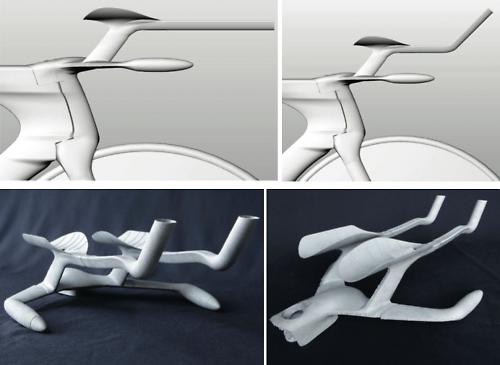
“Behind the spacers for the arm rests, a low pressure zone is generated, because of the transition between the parts,” says Pinarello. “A proper design of this zone helps to reduce this, and consequently the drag.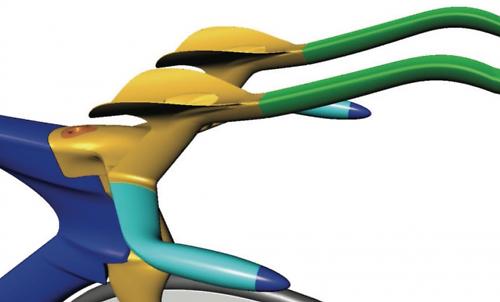
“Standard technologies, such as CNC or carbon moulding, would be excessively long and expensive to produce this particular shape, so we used an additive manufacturing method (also known as 3D printing) to manufacture a titanium handlebar.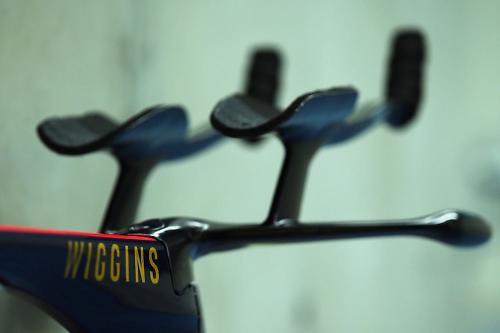
"In the additive manufacturing technique a high energy source locally melts the powdered material (typically metal), as defined by a 3D model, binding the material together to create a solid structure.
“The capabilities of this technology allowed [us] to produce a small batch of handlebars, everyone different from the other… This method will now be used to provide a similar service to Pinarello customers via the MOST parts brand.”
3D printing has become more common in the cycling world over the past few years with components like Silca’s Mensola computer mount, for example, being made in this way, although it is usually reserved for small parts.
> Pinarello announces Bolide F as its “fastest bike ever
That’s why it was a surprise to hear that Filippo Ganna will attempt to beat the Hour Record this weekend on a Pinarello Bolide F HR 3D with a 3D printed frame. Pinarello clearly believes in the technology, saying that this bike marks the beginning of a new manufacturing era.
Wiggins set a new UCI Hour Record of 54.526km on his Bolide HR in 2015, and that remains the current sea-level world best. However, Filippo Ganna will need to ride over 1km more to beat the 55.548km record that Dan Bigham achieved in August 2022.
Mat has been in cycling media since 1996, on titles including BikeRadar, Total Bike, Total Mountain Bike, What Mountain Bike and Mountain Biking UK, and he has been editor of 220 Triathlon and Cycling Plus. Mat has been road.cc technical editor for over a decade, testing bikes, fettling the latest kit, and trying out the most up-to-the-minute clothing. He has won his category in Ironman UK 70.3 and finished on the podium in both marathons he has run. Mat is a Cambridge graduate who did a post-grad in magazine journalism, and he is a winner of the Cycling Media Award for Specialist Online Writer. Now over 50, he's riding road and gravel bikes most days for fun and fitness rather than training for competitions.
Latest Comments
- Gravel1-2 8 min 18 sec ago
Had mine stolen from the work car park overnight. They cut their way in and took what bikes they could stuff in a van including mine....
- MatzeLoCal 11 min 28 sec ago
""More adverts than bike racing"...
- brooksby 36 min 4 sec ago
Ah, alcohol: the solution to - and the cause of - many of the world's problems.
- Iwein Dekoninck 1 hour 25 min ago
I don't have an older / longer Rapha jersey to compare to, but I thought the length was spot on, certainly not short like some of the aero jerseys.
- Dnnnnnn 2 hours 14 min ago
"With the six-month review of the scheme now approaching"... LOL. The scheme they prevented implementation of for almost six months....
- Rendel Harris 2 hours 26 min ago
Especially as apparently his Di2 managed to mistake the shaking from the cobbles of the Arenberg as a crash and went into crash mode, locking him...
- wtjs 2 hours 29 min ago
APPGs (not just this one) are pretty low down the influence ladder...
- Gus T 3 hours 8 min ago
Don't forget that the Tariffs will still apply to the imported raw materials and parts so are of no benefit to the US consumer. Americas burns...
- Gus T 3 hours 16 min ago
My wife & I visited Bristol for the 1st time a couple of weeks ago, I was amazed at the congestion caused by the number of single occupancy...
- hawkinspeter 3 hours 55 min ago
https://www.bristolpost.co.uk/news/bristol-news/live-bus-crashes-bridge-bristol-10103689 That bridge really needs some hi-viz
Add new comment
1 comments
Road.cc making up a new hour record category "sea level", best human effort Chris Boardman 56.375km should be what he's aiming for (also at sea level).